|
|
|
Книги издательства «Wiley»
|
Noise, as we usually think of it, is background sound that interferes with our ability to hear more interesting sounds. In general terms, though, it is anything that interferes with the reception of signals of any sort. It includes extraneous energy in the environment, degradation of signals in transit, and spontaneous random activity in receivers and signalers. Whatever the cause, the consequence of noise is error by receivers, and these errors are the key to understanding how noise shapes the evolution of communication. Noise Matters breaks new ground in the scientific understanding of how communication evolves in the presence of noise. Combining insights of signal detection theory with evidence from decades of his own original research, Haven Wiley explains the profound effects of noise on the evolution of communication. The coevolution of signalers and receivers does not result in ideal, noise-free communication, Wiley finds. Instead, signalers and receivers evolve to a joint equilibrium in which communication is effective but never error-free. Noise is inescapable in the evolution of communication. Wiley s comprehensive approach considers communication on many different levels of biological organization, from cells to individual organisms, including humans. Social interactions, such as honesty, mate choice, and cooperation, are reassessed in the light of noisy communication. The final sections demonstrate that noise even affects how we think about human language, science, subjectivity, and freedom. Noise Matters thus contributes to understanding the behavior of animals, including ourselves. |

|
Developmental robotics is a collaborative and interdisciplinary approach to robotics that is directly inspired by the developmental principles and mechanisms observed in children's cognitive development. It builds on the idea that the robot, using a set of intrinsic developmental principles regulating the real-time interaction of its body, brain, and environment, can autonomously acquire an increasingly complex set of sensorimotor and mental capabilities. This volume, drawing on insights from psychology, computer science, linguistics, neuroscience, and robotics, offers the first comprehensive overview of a rapidly growing field. After providing some essential background information on robotics and developmental psychology, the book looks in detail at how developmental robotics models and experiments have attempted to realize a range of behavioral and cognitive capabilities. The examples in these chapters were chosen because of their direct correspondence with specific issues in child psychology research; each chapter begins with a concise and accessible overview of relevant empirical and theoretical findings in developmental psychology. The chapters cover intrinsic motivation and curiosity; motor development, examining both manipulation and locomotion; perceptual development, including face recognition and perception of space; social learning, emphasizing such phenomena as joint attention and cooperation; language, from phonetic babbling to syntactic processing; and abstract knowledge, including models of number learning and reasoning strategies. Boxed text offers technical and methodological details for both psychology and robotics experiments. |
|
This volume is the first of two to illuminate the buildings of the northeast of Scotland. It covers not only Aberdeenshire's historic districts of Formartine, Buchan, and Banff but also the whole of Moray. Picturesque former fishing villages cling to the rugged coastline, while the inland rivers support some of the most famous whisky distilleries in Scotland. Also included are examples of the finest medieval ecclesiastical architecture, notably the ruins of Elgin Cathedral, major country houses such as Brodie Castle and Duff House, as well as the churches and public buildings of the numerous planned settlements, villages and major towns. |
|
Издательство: Wiley, 2015 Жанр: Wiley Страниц: 240 страниц Загрузил: admin, 23 октября 2019
From John Muir to the Endangered Species Act, environmentalism in America has always had close to its core a preservationist ideal. Generations have been inspired by its ethos-to protect nature from the march of human development. But we have to face the facts. Accelerating climate change, rapid urbanization, agricultural and industrial devastation, metastasizing fire regimes, and other quickening anthropogenic forces all attest to the same truth: the earth is now spinning through the age of humans. After Preservation takes stock of the ways we have tried to both preserve and exploit nature to ask a direct but profound question: what is the role of preservationism in an era of seemingly unstoppable human development, in what some have called the Anthropocene? Ben A. Minteer and Stephen J. Pyne bring together a stunning consortium of voices comprised of renowned scientists, historians, philosophers, environmental writers, activists, policy makers, and land managers to negotiate the incredible challenges that environmentalism faces. Some call for a new, post-preservationist model, one that is far more pragmatic and human-centered. Others push back, arguing for a more chastened vision of human action on the earth. Some try to establish a middle ground, while others ruminate more deeply on the meaning and value of wilderness. Some write on species lost, others on species saved, and yet others discuss the enduring practical challenges of managing our land, water, and air. From spirited optimism to careful prudence to critical skepticism, the resulting range of approaches offers an inspiring contribution to the landscape of modern environmentalism, one driven by serious, sustained engagements with the critical problems we must solve if the planet is going to survive the era we have ushered in. |
|
To some, food allergies seem like fabricated cries for attention. For others, they pose a dangerous health threat. Food allergies are bound up with so many personal and ideological concerns that it is difficult to determine what is medical and what is myth. This book parses the political, economic, cultural, and genuine health factors of a phenomenon that now dominates our interactions with others and our understanding of ourselves. Surveying the history of food allergy from ancient times to the present, Another Person's Poison also gives readers a clear grasp of new medical findings on allergies and what they say about our environment, our immune system, and the nature of the food we consume. For most of the twentieth century, food allergies were considered a fad or junk science. While many physicians and clinicians argued that certain foods could cause a range of chronic problems, from asthma and eczema to migraines and hyperactivity, others believed that allergies were psychosomatic. Another Person's Poison traces the trajectory of this debate and its effect on public-health policy and the production, manufacture, and consumption of food. Are rising allergy rates purely the result of effective lobbying and a booming industry built on self-diagnosis and expensive remedies? Or should physicians become more flexible in their approach to food allergies and more careful in their diagnoses? Exploring the issue from scientific, political, economic, social, and patient-centered perspectives, this book is the first to engage fully with the history of what is now a major modern affliction, illuminating society's troubled relationship with food, disease, and the creation of medical knowledge. |
|
The Arts and Crafts movement in architecture, interior design, and decorative arts reached its peak between 1880 and 1910 in Britain and North America. The movement's emphasis on aesthetic quality and a high level of craftsmanship, promoted as an antidote to the ubiquity and uninspired appearance of machine-produced products, remains much admired today. Arts and Crafts enjoyed special resonance in Chicago, the home of Jane Addams' Hull House, where immigrants and women received training in handicraft skills not only to beautify domestic life but also to provide them with viable, honourable work. Apostles of Beauty presents outstanding examples by the movement's British originators, such as William Morris and Charles Robert Ashbee, as well as its greatest American practitioners, such as Gustav Stickley and Frank Lloyd Wright. The volume highlights a wide range of objects, including ceramics, furniture, metalwork, paintings, photographs, and textiles. It focuses on Chicago's absorption and interpretation of the movement, featuring works from the Art Institute, the University of Chicago, the Frank Lloyd Wright Home and Studio, Crab Tree Farm, and private collections. Contributors to the book explore the complex influences of the Arts and Crafts style and provide a thematic history of the movement, including a section on design and collecting in Chicago. |
|
This book discusses energy efficiency in large-scale systems. It provides an overview of current energy-reducing technologies and the energy consumption method, addressing topics such as cloud computing, high-performance computing, networks and more. The book begins with an introduction to energy demands in ICT. It then covers topics like green wired/wireless networks, mobile computing, power modeling, green data centers and high-performance computing, resource allocation and energy efficiency in P2P systems. |
|
Where does DNA come from? What is consciousness? How did the eye evolve? Drawing on a treasure trove of new scientific knowledge, Nick Lane expertly reconstructs evolution's history by describing its ten greatest inventions-from sex and warmth to death-resulting in a stunning account of nature's ingenuity. |
|
This is a stunning tour through eight centuries of manuscript illumination. Known for their stunning displays of artistry and technique, Italian illuminated manuscripts have long been coveted by collection around the world. The J. Paul Getty Museum holds the most recently formed institutional collection of its kind in the United States, yet it spans more than eight centuries and reflects many of the extraordinary achievements of the Italian tradition. Made up of whole manuscripts as well as leaves and cuttings, the Getty collection of Italian illumination contains nearly sixty works and includes the Montecassino Breviary, the Ferrarese Gualenghi-d'Este Hours, and the Roman gradual illuminated by Antonio da Monza for Santa Maria in Aracoeli. Other important acquisitions are one of the finest Bolognese Bibles of the thirteenth century; three leaves from the Laudario of Sant'Agnese, the most ambitious Florentine manuscript from the first half of the fourteenth century; and a missal once owned by the antipope John XXIII. This beautifully illustrated volume presents many splendid examples of Italian painting and illumination. Some are by noted artists such as Girolamo da Cremona, Pacino de Bonaguida, and Pisanello; others are attributed to artists known only by their works, such as the Master of Gerona, who is credited with one of the finest miniatures in the collection. |

|
As the greatest coal-producing and consuming nation in the world, China would seem an unlikely haven for wind power. Yet the country now boasts a world-class industry that promises to make low-carbon technology more affordable and available to all. Conducting an empirical study of China's remarkable transition and the possibility of replicating their model elsewhere, Joanna I. Lewis adds greater depth to a theoretical understanding of China's technological innovation systems and its current and future role in a globalized economy. Lewis focuses on China's specific methods of international technology transfer, its forms of international cooperation and competition, and its implementation of effective policies promoting the development of a home-grown industry. Just a decade ago, China maintained only a handful of operating wind turbines — all imported from Europe and the United States. Today, the country is the largest wind power market in the world, with turbines made almost exclusively in its own factories. Following this shift reveals how China's political leaders have responded to domestic energy challenges and how they may confront encroaching climate change. The nation's escalation of its wind power use also demonstrates China's ability to leapfrog to cleaner energy technologies — an option equally viable for other developing countries hoping to bypass gradual industrialization and the technological lock-in of hydrocarbon-intensive energy infrastructure. Though setbacks are possible, China could one day come to dominate global wind turbine sales, becoming a hub of technological innovation and a major instigator of low-carbon economic change. |
|
Forms offers a powerful new answer to one of the most pressing problems facing literary, critical, and cultural studies today — how to connect form to political, social, and historical context. Caroline Levine argues that forms organize not only works of art but also political life — and our attempts to know both art and politics. Inescapable and frequently troubling, forms shape every aspect of our experience. But forms don't impose their order in any simple way. Multiple shapes, patterns, and arrangements, overlapping and colliding, generate complex and unpredictable social landscapes that challenge and unsettle conventional analytic models in literary and cultural studies. Borrowing the concept of affordances from design theory, this book investigates the specific ways that four major forms — wholes, rhythms, hierarchies, and networks — have structured culture, politics, and scholarly knowledge across periods, and it proposes exciting new ways of linking formalism to historicism and literature to politics. Levine rereads both formalist and antiformalist theorists, including Cleanth Brooks, Michel Foucault, Jacques Ranciere, Mary Poovey, and Judith Butler, and she offers engaging accounts of a wide range of objects, from medieval convents and modern theme parks to Sophocles's Antigone and the television series The Wire. The result is a radically new way of thinking about form for the next generation and essential reading for scholars and students across the humanities who must wrestle with the problem of form and context. |
|
A current view of the challenging field of catalytic arylation reactions. Clearly structured, the chapters in this one-stop resource are arranged according to the reaction type, and focus on novel, efficient and sustainable processes, rather than the well-known and established cross-coupling methods. The entire contents are written by two authors with academic and industrial expertise to ensure consistent coverage of the latest developments in the field, as well as industrial applications, such as C-H activation, iron and gold-catalyzed coupling reactions, cycloadditions or novel methodologies using arylboron reagents. A cross-section of relevant tried-and-tested experimental protocols is included at the end of each chapter for putting into immediate practice, along with patent literature. Due to its emphasis on efficient, green methods and industrial applications of the products concerned, this interdisciplinary text will be essential reading for synthetic chemists in both academia and industry, especially in medicinal and process chemistry. |

|
Detecting Deception offers a state-of-the-art guide to the detection of deception with a focus on the ways in which new cognitive psychology-based approaches can improve practice and results in the field. Includes comprehensive coverage of the latest scientific developments in the detection of deception and their implications for real-world practice Examines current challenges in the field — such as counter-interrogation strategies, lying networks, cross-cultural deception, and discriminating between true and false intentions Reveals a host of new approaches based on cognitive psychology with the potential to improve practice and results, including the strategic use of evidence, imposing cognitive load, response times, and covert lie detection Features contributions from internationally renowned experts. |
|
When it comes to learning linear algebra, engineers trust Anton. The tenth edition presents the key concepts and topics along with engaging and contemporary applications. The chapters have been reorganized to bring up some of the more abstract topics and make the material more accessible. More theoretical exercises at all levels of difficulty are integrated throughout the pages, including true/false questions that address conceptual ideas. New marginal notes provide a fuller explanation when new methods and complex logical steps are included in proofs. Small-scale applications also show how concepts are applied to help engineers develop their mathematical reasoning. |
|
Издательство: Wiley, 2015 Жанр: Wiley Страниц: 400 страниц Загрузил: admin, 17 сентября 2021
«This book is a «go-to» source for industrial energy management programs. It addresses the needs of engineers and managers who are designing and implementing policies and programs for energy management and energy efficiency. It introduces a framework for an industrial energy management program, provides illustrations, and discusses the basic principles of the component elements of the program. The book is divided into two sections. The first section addresses organizational and human interaction aspects, including practical advice for avoiding common missteps. Chapters focus on program goal setting, benchmarking, strategies, priorities, and roles of site personnel, as well as discussions on implementing selected energy initiatives, experiences from multiple companies and plant sites, and ideas for engaging and motivating personnel. The second section deals with the more technical aspects of energy management and energy efficiency — things that you might consider traditional chemical engineering. Chapters focus on the plant systems and equipment most important to process energy savings, with guidance on data gathering, evaluation and analysis, together with proven options for achieving improvements in energy efficiency.» |
|
Russia first encountered Alaska in 1741 as part of the most ambitious and expensive expedition of the entire 18th century. During the next 126 years the struggle to develop and refine geographic knowledge of the vast region comprising northeastern Asia, the North Pacific, and Alaska met with many obstacles, including inclement weather, the chain of supply over great distances, the need to train expert navigators and cartographers, and false leads due to spurious voyage accounts. For much of this era, critical geographic knowledge was kept as a state secret in Russia and not shared, even with the very navigators and cartographers who were developing much needed maps and navigational aids. Despite this, a rich cartographic heritage developed to be carried forward into the American era. The traditional Russian cartographic methods were applied to new discoveries in Siberia and beyond. Early fur traders and explorers utilized this system which for a time co-existed with the new cartographic methodology utilized in Europe and adopted for use by the Russia of Peter the Great. It became an age of scientific exploration. Great Britain, France, Spain, but especially Russia, sent expeditions. An increasingly complete knowledge of the coasts of North America, with forays into the interior, emerged. Postnikov describes the explorations and richly illustrates how the resulting maps evolved and contributed to the world's knowledge of one of the last great regions of the world to be explored. |
|
A complete tutorial and reference for AutoCAD Civil 3D 2013 Autodesk's Civil 3D is the leading civil engineering software, and this reliable training guide has been thoroughly revised and updated to offer a fresh perspective on this powerful engineering package. Filled with illustrative examples, new datasets, and new tutorials, this book shows how elements of the dynamic engineering program work together and discusses the best methods for creating, editing, displaying, and labeling all of a civil engineering project's elements. The book's straightforward explanations, real-world examples, and practical tutorials focus squarely on teaching vital Civil 3D tips, tricks, and techniques. The authors' extensive real-world experience and Civil 3D expertise allows them to focus on how the software is used in real-world professional environments and present topics and techniques that are not documented elsewhere. |
|
Leadership principles from a master of the business turnaround In Reinvent, renowned CEO and business leader Fred Hassan explains how to transform a struggling business into a raging success by reinventing the culture, attitude, and behaviors of organizations and people. Leaders who want to change cultures and individuals need a cool head, a clear vision, and a well-refined ability to inspire that change. Here, Hassan explains how a productive organizational culture leads to real success. The first part of the book focuses on how you, as a leader, can unleash your full powers by learning to be authentic, purposeful, and connected with your organization. The second part of the book focuses on groups, how to lead them, how to be a role model for the effort you expect, and how to keep winning and innovating. Taken together, these principles fuel smarter strategies, more effective execution, and better governance. Features practical, proven guidance appropriate for every business leader in any industry Ideal for corporate executives, managers, team leaders, human resources professionals, board members, and consultants Written by a renowned public speaker and former CEO known for turning around struggling companies Revealing how you can make culture your secret weapon, Reinvent is the perfect tool for business leaders in highly competitive industries. |
|